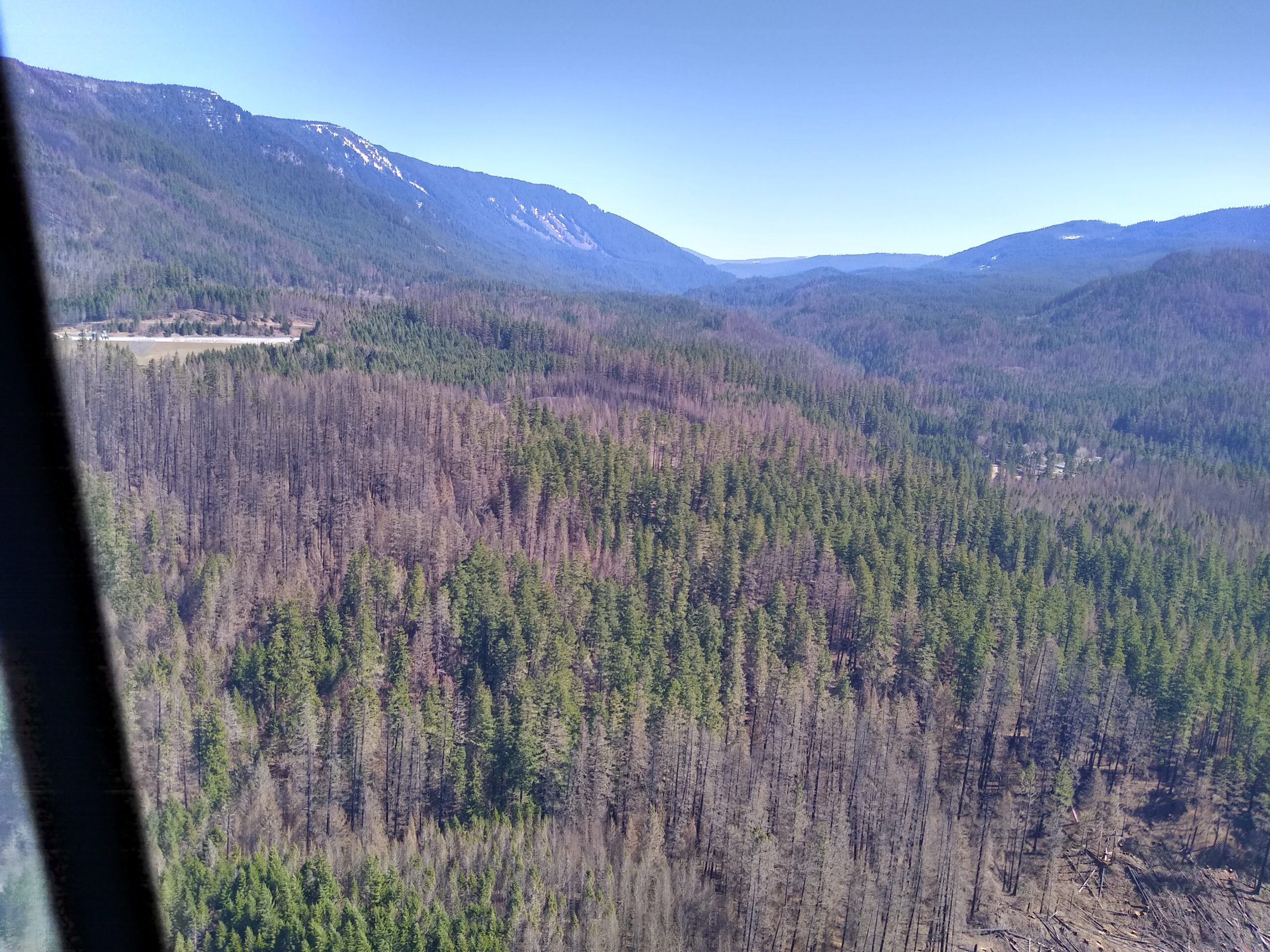Forest Service Proposes Familiar “New” Fire Strategy

It’s officially summer in the Pacific Northwest! This year’s exceptionally cold and wet spring is a stark contrast to the heat dome phenomenon of June 2021, which brought record breaking high temperatures around this time last year. Despite the increase in rain, more than half of Oregon is experiencing some stage of drought, resulting in the hot and dry conditions which fuel the annual wildfire season.
Fire has always been a necessary and vital process for regeneration in this area and only relatively recently has fire been intensively suppressed. The Native peoples of the Northwest have been practicing cultural burning for millennia to maintain habitat for food, medicine, and wildlife. The ongoing severance of the reciprocal relationship between forested landscapes and Native peoples combined with federal mismanagement, fire suppression policies, and climate change fueled conditions have created increased wildfire activity and changing wildfire behavior in the 21st century.
The backbone of community resilience to wildfire is allocating resources for preparedness and home hardening.
Earlier this year, the U.S. Forest Service unveiled a so-called paradigm shift to propose how the agency will adapt to these challenges and protect communities vulnerable to wildfire. Their Wildfire Crisis Strategy outlines forest fuels treatments (primarily thinning) on 20 million acres of national forest land over the next decade. For reference, the Forest Service treated approximately 1.4 million acres per year on average from 2009 to 2018. The plan, as currently written, is a far cry from a paradigm shift and in actuality doubles down on the same thinning and fire suppression approaches of the past which are proven to be ineffective at protecting communities vulnerable to wildfire.
Thinning treatments rarely encounter fire and they have very limited ability to prevent its spread. Some research suggests that intensive fuel reduction actions like large clear cut style fuel breaks may exacerbate fire severity where projects leave behind combustible slash, open the forest canopy to create more ground-level biomass, and increase solar radiation which dries out the understory. The limited efficacy of fuel-based treatments is especially apparent on the west side of the Cascades where new research determined that fuels management played a relatively small role in minimizing the severity and scale of the Labor Day Fires of 2020. The results of this research suggest that manipulation of stand structure through thinning is unlikely to mitigate fire effects in large wind-driven fires on the west side of the Cascades.
This tells us is that the backbone of community resilience to wildfire is not thinning in remote areas of the forest—it is allocating resources to community preparedness and prioritizing fuel treatments as close as possible to homes and structures.
A true paradigm shift would improve opportunities for Indigenous stewardship and co-management, reallocate more funding for fire ecologists and fire practitioners rather than commercial timber interests, and prioritize community resiliency to wildfire by focusing fuels treatments in the defensible space zone. Combined, these approaches are the A true paradigm shift would improve opportunities for Indigenous stewardship and co-management, reallocate more funding for fire ecologists and fire practitioners rather than commercial timber interests, and prioritize community resiliency to wildfire by focusing fuels treatments in the defensible space zone. Combined, these approaches are the best bet at protecting people, places, and infrastructures from the spread of high intensity fire. Bark is working with organizations around the state to urge Forest Service leadership to make a more honest paradigm shift toward ecological fire management and strategies that will enable communities to live safely in fire adapted landscapes. We will keep you updated with any upcoming opportunities to get involved in this process—and what can be done in the meantime? While policy work is wait-and-see, we continue our beaver restoration work because beaver naturally create fire-resistant landscapes. Sign up today and join us on our upcoming volunteer days to map beaver habitat and wetlands.
For the forest,
Cara Christofferson, Bark Forest Policy and Advocacy Coordinator
P.S. You can use this map to determine the risk posed to your community by wildfire.